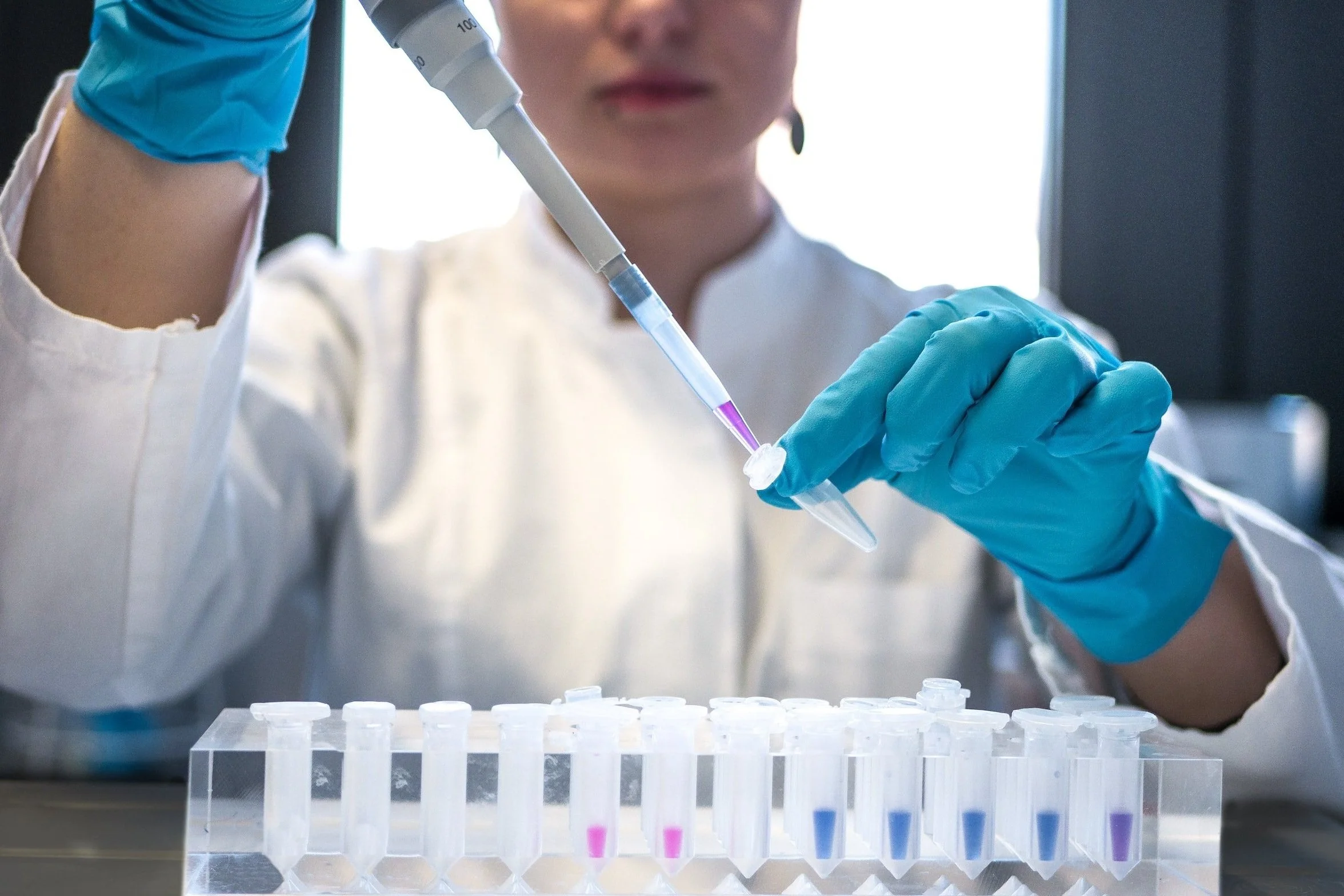Book Review: Young Forever by Mark Hyman, MD
Judging by the fact that this book has been the #1 best-seller on Amazon, a lot of people care about longevity. And not just about living longer, but about living longer with a good quality of life. People want a long “healthspan,” which means being healthy enough to do the things they love as they age. Unfortunately, six out of ten Americans have at least one chronic disease (high blood pressure, diabetes, autoimmunity, etc.) and the average eighty-five year old has five diseases and takes five medications. So the current state of our healthspan is dismal.
In the book Young Forever, Hyman questions the paradigm of a society where aging is normal and getting sicker is acceptable. Instead, he proposes that we start treating aging itself as a disease. Indeed, advancements in science have revealed more and more about why, molecularly, we age. And the good news is that these biological processes can be reversed by activating our body’s repair mechanisms. By triggering our own biological healing, we can slow aging and even, potentially, age backwards.
This is where the term “biological age” comes in. While we can’t change the year we were born (our chronological age), we can measure – and change – the rate at which our cells get older. We can specifically measure our biological age by measuring the chemical tags on our genes called DNA methylation. DNA methylation changes as we age and in response to our diet and lifestyle. It is one of the ways we can actually alter our genome: by providing the environmental cues (sunlight, sleep, nutrition, exercise) that can turn on or off certain genes. By looking at this methylation code, companies have been able to determine our “biological age.” This is how Mark Hyman came to determine that, at age 63, his biological age was only 43.
So why do we age? There are specific longevity switches, or pathways, in our bodies that cause us to get older. The one that you’ll probably hear the most about is mTOR (don’t worry about what it stands for). With mTOR, we sometimes want it turned on, but we also need it to be turned off. It gets turned on by protein and exercise, which helps us build muscle, but when it turns off, it stops the aging process. It gets turned off by fasting, which is why fasting is associated with longevity. It also gets turned off by the drug rapamycin, which is used as an immunosuppressant in organ transplant patients. Rapamycin mimics a fasting state and can optimize longevity, but it does have side effects and cannot be taken every day. Researchers are working on making drugs that act like rapamycin without the side effects. Stay tuned.
The second longevity switch you might hear about is the AMPK pathway (again, don’t worry about what it stands for). When AMPK is turned on, your lifespan increases: your insulin resistance improves, you have more energy in your cells, and your stress resistance increases. But as we age, the AMPK pathway doesn’t work as efficiently, so our metabolism decreases and we experience inflammation. The drug metformin, which is used to treat type 2 diabetes, activates AMPK and has been shown to reduce age-related diseases, such as cancer, and possibly slow aging. The TAME Trial will soon show us how effective metformin may be for improving longevity, but to date, the effect of metformin has not been shown to be as large as changing a person’s diet and lifestyle.
The third and final longevity switch is sirtuins. These proteins regulate which genes make new proteins and are essential for our energy, fixing DNA damage, and longevity in general. You might remember how resveratol from red wine made the news as “healthy?” Resveratrol activates sirtuins. (Unfortunately you would have to drink the equivalent of 1500 bottles of red wine to get enough resveratrol to activate your sirtuins, which is why that study doesn’t pan out.) Anyway, sirtuins are turned on by a compound called NAD+, which is critical for energy production. You might have seen infusions of NAD+ becoming popular, and this is why.
Young Forever also goes over ten “hallmarks of aging.” The first is nutrient signaling, or how eating sugar and starch will age you the fastest. The mechanisms behind this have to do with insulin (the hormone that gets sugar out of your bloodstream and into your cells). Keeping insulin low with a low-sugar, low-starch diet is protective and will activate your longevity switches. Fasting and eating a low-sugar diet will also give our cells the chance to clean up the old and dead parts of themselves through a process called “autophagy.” Regular exercise, especially high-intensity interval training, can also stimulate autophagy to clean up the unwanted debris, as can certain phytonutrients, such as those found in green tea, coffee, turmeric, pomegranate, and other foods.
While nutrient sensing is arguably the most important component of aging, the other hallmarks include DNA damage (by UV light, toxins, and stressors), telomere shortening (telomeres are the protective caps at the ends of our DNA that shorten as we age), damaged proteins and cells, dysfunctional mitochondria (which produces the energy for our bodies), gut health, stem cell exhaustion, and inflammation. Fortunately, there are dietary and lifestyle modifications that can ameliorate all ten of these hallmarks of aging.
So that’s a lot of information, but what it comes down to is this: changing your diet and lifestyle can activate the biological pathways in our bodies that can help us age backwards. A study by the functional medicine doctor Kara Fitzgerald put 43 healthy adult men between 50 and 72 years old on a program of a whole foods anti-inflammmatory diet, exercise, sleep optimization, stress reduction, probiotics, and a phytochemical supplement. The treatment group reversed their biological age by an incredible 3.23 years in just eight weeks.
Based on all this, Young Forever dives deep into what you can do to optimize your core biological systems and how to prevent aging. Here is my attempt to summarize:
Diet
Always eat whole foods, not processed
Avoid gluten (especially today’s modern hybridized dwarf wheat)
Limit starch and sugar
Avoid refined oils (vegetable, soybean, canola, corn, grapeseed, sunflower, peanut, margarine, safflower, vegetable shortening, hydrogenated and partially hydrogenated)
Consider MCT oil for mitochondria repair (especially before exercise)
Avoid too much raw kale (can block thyroid hormone)
Add in phytochemicals (broccoli, green tea, coffee, pomegranate, tomato)
Protein: people over 60 may need 1.5-2 grams per kg body weight of protein per day, as older adults need more protein to build muscle. Hyman recommends 25-30 grams of protein per meal, containing 2.5 grams of leucine, an animal protein that is most effective at building muscle
Exercise
Move!
Exercise protects your telomeres, antioxidant systems, cellular cleanup, and improves lifespan overall
Resistance training is most important for building/maintaining muscle
Cardiovascular exercise and pliability are also important
Lifestyle
Social connections and having a life purpose increases longevity. If you have a strong life purpose, you’ll live seven years longer than if you don’t have a clear purpose
Sleep: if you sleep less than 7 hours per night, your risk of death increases by 24%
Hormesis
This is the process of applying a stressor to your body to make it more resilient overall. Some examples of hormesis that can extend your life are:
Time-restricted eating like intermittent fasting: activates cellular cleanup through autophagy
High-intensity interval training: stimulates autophagy
Cold plunge: activates the vagus nerve and relaxation response, increases the feel good neurotransmitter dopamine, increases brown fat, which stimulates metabolism
Sauna: Saunas 4-7 times per week had a 40% reduction in death and 66% reduction in the risk of Alzheimer’s
Breath work (Wim Hof) and hypoxia (low oxygen states): improves blood sugar response and cognitive performance
Hyperbaric oxygen therapy: gets rid of damaged inflammatory cells and lengthens telomeres to increase longevity, stimulates blood vessel growth and mitochondria production
Ozone therapy: treats infections, wounds, autoimmune disease, and arthritis, produces more stem cells, enhances mitochondria
Red light therapy: activates protective mechanisms in cells and stimulates cells to make more energy
Phytochemicals: strawberries, turmeric, green tea, broccoli, pomegranate, Himalayan Tartary buckwheat, mushrooms
Advanced Techniques for Regenerative Medicine
Once you’ve gotten the lifestyle basics down and incorporated some hormesis, here is the latest frontier of anti-aging medicine. Many of these techniques are very new, but as science advances, it’s possible that we may be only ten to fifteen years away from achieving the “longevity escape velocity,” where we can literally turn back the clock on aging.
I won’t go into too much detail because these are not widely available to most of us, but techniques include stem cell therapy, exosomes (packets of growth factors, anti-inflammatory proteins, DNA, lipids, and microRNA), peptides (mini-proteins), natural killer cell therapy (to fight cancer and infections), and transfer plasma exchange (cleaning the blood). Studies show that when the circulation of an old mouse is connected to that of a young mouse, the old mouse actually becomes younger, and vice versa.
Finally, the Young Forever book offers a series of quizzes so that you can personalize your own goals based on what systems might be out of balance for you. Hyman offers resources for testing your biological age, what labs to get as a baseline to track your overall health, and how to take a deep dive into your own physiology to improve it. Most of the resources can be accessed without a medical professional, and he provides a step-by-step guide of what not to eat and what to prioritize. He offers his own personal routine, including the supplements he takes and his daily longevity smoothie, and he lists a “core plan” of supplements that most people should be taking, such as:
Vitamin D (2000-5000 IU/d)
Omega-3 (1-2 g/d)
Multivitamin
Magnesium
Probiotics
The specific “advanced longevity support” supplements include:
NMN or NR 1000 mg/d to support NAD+
Fisetin 500-1000 mg/d from strawberries, apples, persimmons
Quercetin and flavanols
Pterostilbene 100 mg/d
Curcumin 500-1000 mg/d
EGCG 500-1000 mg/d from green tea
Glucoraphanin - converts to sulforaphane in the body (from broccoli seed extract)
Urolithin A from pomegranate
Metformin (prescription)
Rapamycin (prescription)
Overall, this book is an impressive manual on everything we know about longevity. Using the techniques in Young Forever can help you move further along your path towards increasing your healthspan, no matter what your goals are and no matter what your current level of fitness may be. It’s a fantastic read that I thought was very accessible, even if you don’t have a medical background.
I know this was a lot of information, so if you’ve made it this far, well done! I hope this gives you a few resources to help slow your biological clock. Let me know what you think!
In good health,
Gina





